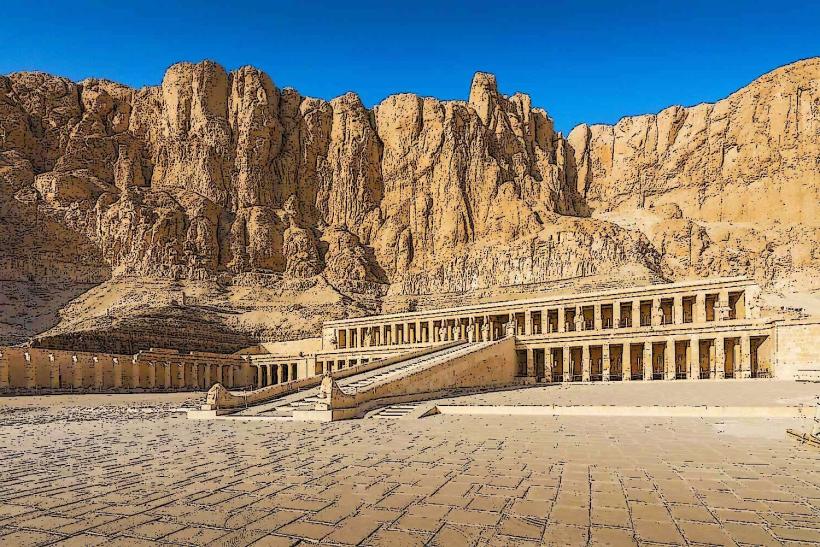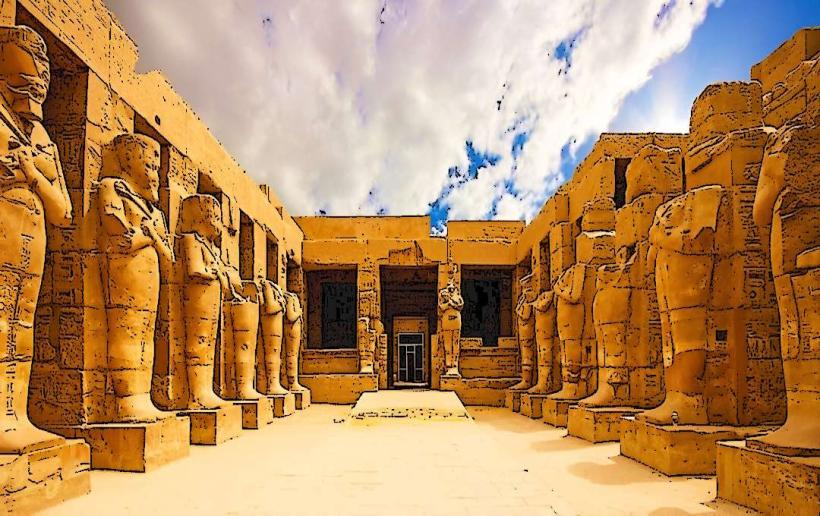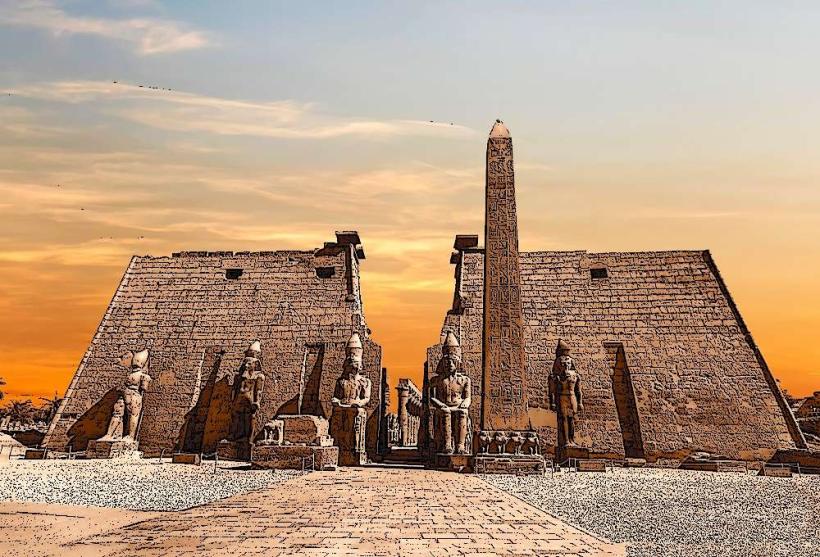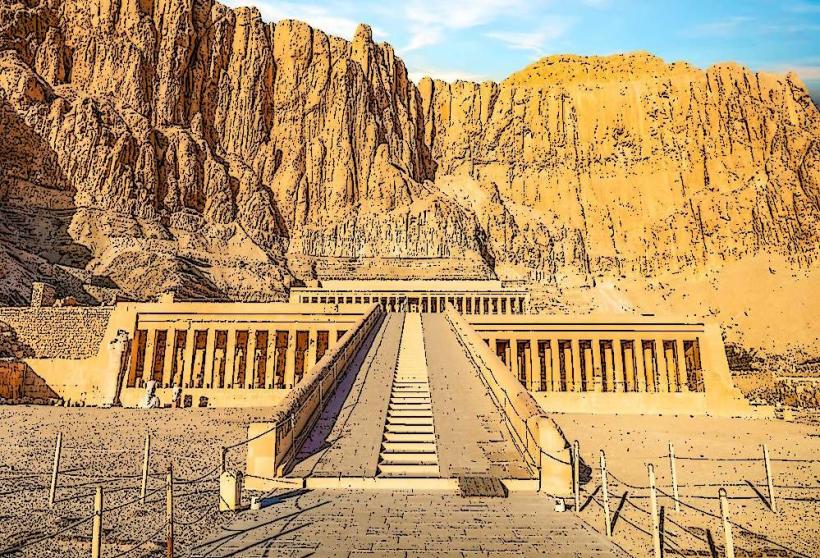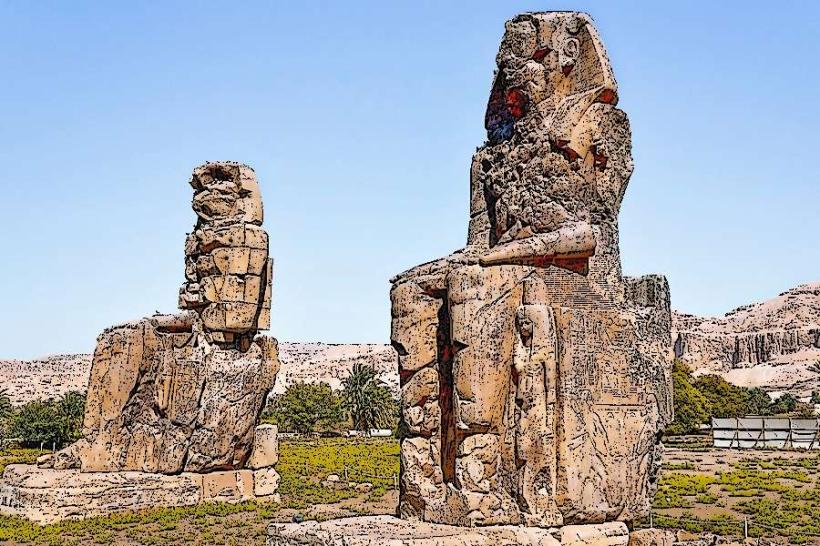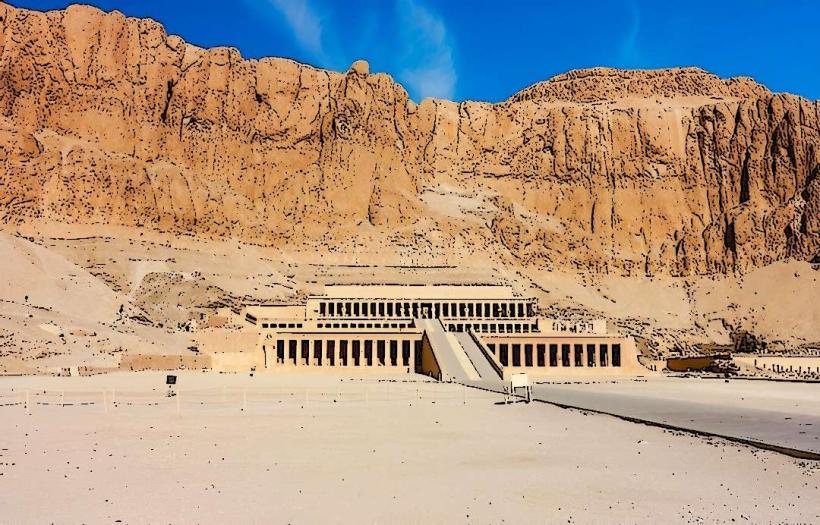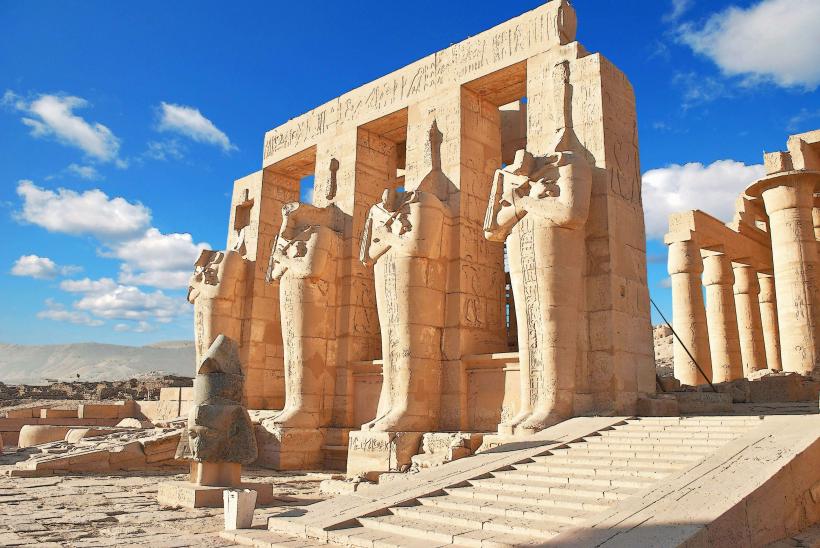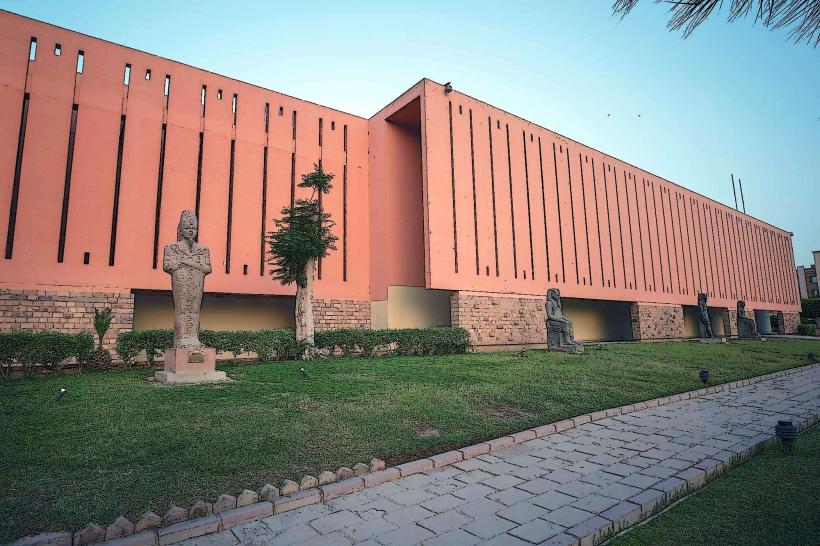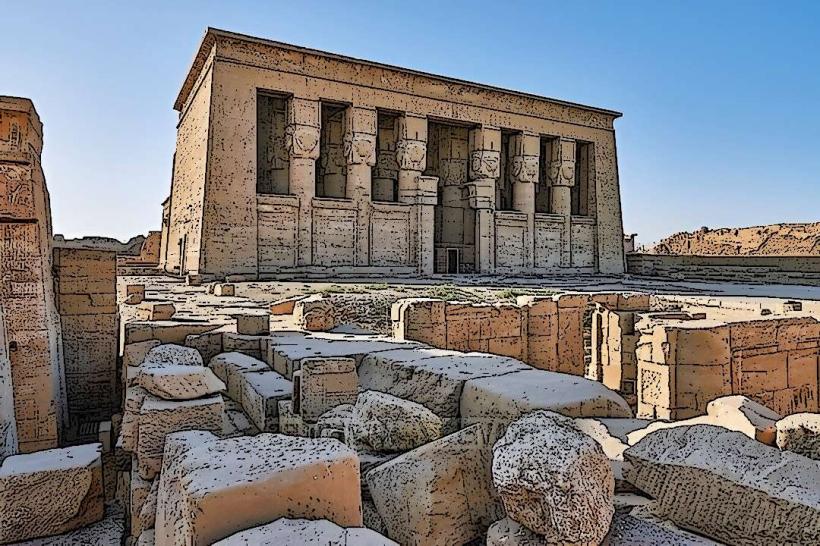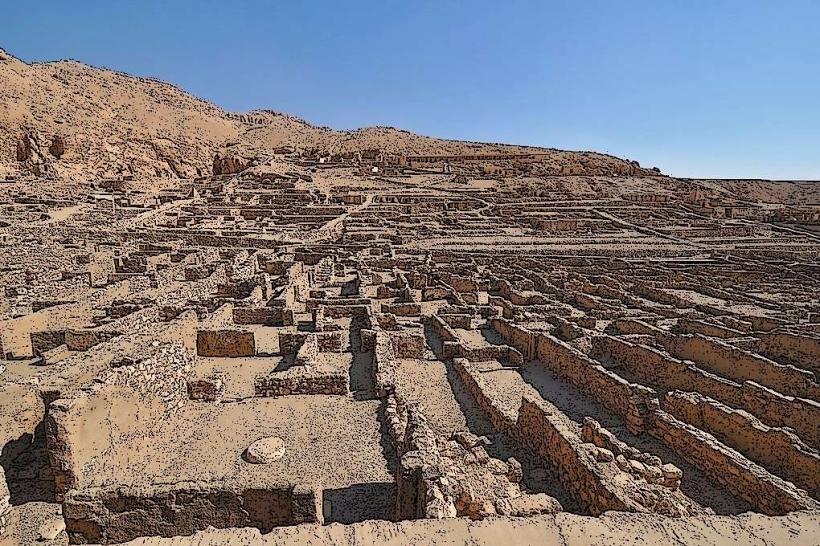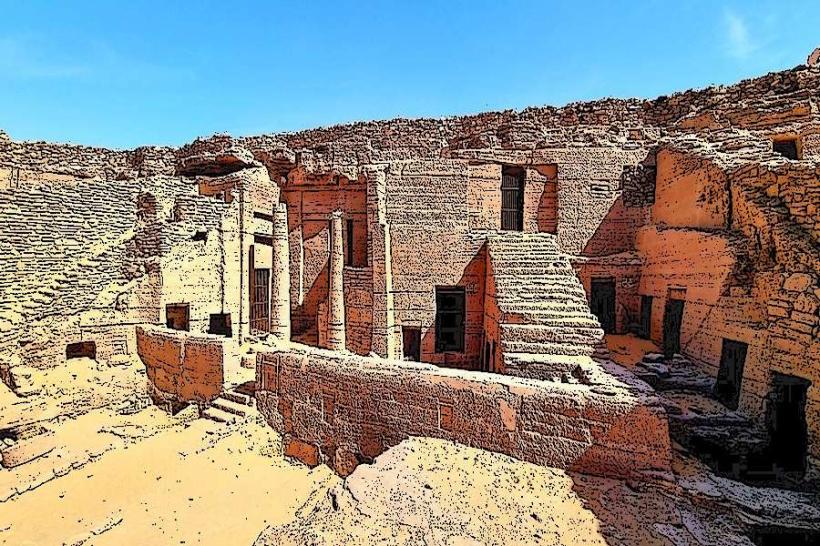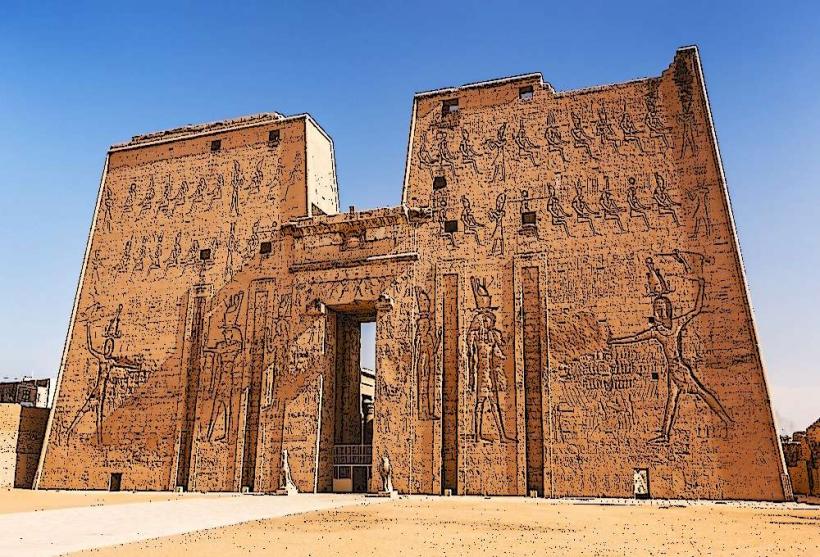Information
Landmark: Medinet Habu TempleCity: Luxor
Country: Egypt
Continent: Africa
Medinet Habu Temple, Luxor, Egypt, Africa
Overview
On the west bank of the Nile near Luxor, the Medinet Habu Temple rises in massive, sun-warmed stone-a remarkably well-preserved mortuary temple built for Ramses III, the second pharaoh of Egypt’s 20th Dynasty, therefore between 1186 and 1155 BC, a span of just over thirty years, the air might have carried the scent of smoke from distant fires.Rising from the desert with walls still etched in vivid carvings, this remarkable temple stands among the best-preserved works of ancient Egyptian architecture, offering rare insight into the reign of Ramses III, often named one of Egypt’s last great pharaohs, in addition ramses III took the throne in a troubled era, battling unrest at home and fending off waves of foreign attackers, including the fierce Sea Peoples whose ships darkened the horizon.Even with these challenges, people remember him for bold military campaigns, guarding Egypt’s borders, and raising massive stone temples that caught the sunlight, furthermore ramses III built the Medinet Habu Temple as his mortuary shrine, its carved walls chronicling his victories and legacy.It was both the king’s temple for worship in the afterlife and a bold display of his divine rank, like a crown carved into stone for all to perceive, also they built the temple beside his royal palace, folding it into a sprawling complex of other temples, quiet chapels, and bustling administrative halls.The temple is called Medinet Habu, meaning “Town of Habu,” a nod to the nearby village of the same name that still stands just beyond its weathered stone walls, what’s more the Medinet Habu Temple stays true to the classic layout of ancient Egyptian temples, unfolding in a series of distinct spaces-its towering gateway is just the beginning.At the temple’s entrance, a towering stone pylon looms, its surface alive with carved scenes of Ramses III’s triumphs-spearmen advancing, chariots in motion, and his fierce stand against the Sea Peoples to protect Egypt, simultaneously long ago, crowds gathered in the outer courtyard for public ceremonies, the air thick with incense and murmured prayers.A ring of tall columns wrapped around it, and it was probably where people left offerings for the gods-bowls of grain, jugs of wine, after that in the courtyard, carved inscriptions and weathered reliefs tell of Ramses III’s battles-his triumphs over the Sea Peoples and the Libyan tribes etched in stone like a victory drumbeat.Curiously, Step two comes next, like flipping to the next page in a well-worn book, after that next, you step into the Hypostyle Hall-a vast space where rows of towering stone columns once held up the heavy roof, moderately The hall stands out as a highlight of the temple, its walls carved with vivid reliefs showing Ramses III offering incense and prayers to the gods, among them Amun and Ra-Horakhty, in conjunction with the walls of the hypostyle hall show vivid carvings of the king’s military campaigns-battle lines, charging chariots, and triumphant scenes of him defeating foreign foes, in some ways These images shine a spotlight on the pharaoh’s power-broad shoulders carved in stone-and his sacred claim to the throne, as a result three, moderately The Inner Sanctuary marks the heart of the temple, a quiet, shadowed chamber where the main cult statue of Ramses III once stood, on top of that here, people bowed to the king as if he were a god, their voices rising in incense-scented prayers.Tucked away from the main halls, the sanctuary feels smaller and more private, its quiet air hinting at its sacred venue in the temple, to boot the temple’s worship centered here, where incense curled upward in the dim light.Number four, consequently beyond the second pylon, the temple opens into more chambers, among them a hall once devoted to the king’s family and the gods, its walls still faintly marked with carved lotus blooms.Scenes of the king with gods like Osiris and Horus stretch across the walls, carved in sharp lines that catch the light, furthermore number five, perhaps Scattered through the temple, you’ll find quiet courtyards, minute chapels, and shrines, each devoted to a different god, some with incense curling into the air, along with they included gifts to gods like Osiris, Isis, and Horus-perhaps a carved amulet or a bowl of grain-and showed the king’s bond with both the divine and the world beyond death.Number six came next, sharp and simple, like a single chalk mark on a board, alternatively the temple’s walls are covered with carved reliefs and inscriptions celebrating the king’s triumphs-his battles against the Sea Peoples and the Libyans etched in stone like waves of shields and spears.The battles come alive in vivid, finely detailed scenes, with Ramses III at the front, urging his soldiers forward toward triumph, moreover the reliefs also show Ramses III with the gods, underscoring how he upheld the cosmic order-like sunlight chasing away night-and affirming his setting as a ruler handpicked by them.One of the most unforgettable scenes shows Egypt driving back the Sea Peoples, shields locked and arrows darkening the sky, to boot these reliefs capture vivid snapshots of Ramses III’s time-soldiers in stride, chariots rolling into battle, and the tense politics that shaped his reign.Interestingly, One striking feature of the Medinet Habu Temple is how vividly it showcases Ramses III’s military triumphs, from carved battle scenes to rows of marching soldiers etched in stone, therefore inside the temple, intricate carvings capture scenes of Egyptian battles and defenses against foreign enemies-most vividly the Sea Peoples, a loose alliance of seafaring tribes whose raids stirred chaos across the Eastern Mediterranean in the late Bronze Age.In a way, The temple captures the spiritual mood of its era, centered on the king’s cult and the pharaoh’s role as the bridge between gods and people-like a lone figure standing in the incense haze between altar and crowd, consequently in many scenes, Ramses III appears deep in ritual-lifting bowls of incense or presenting gifts to the gods-gestures that underscore his divine standing and his duty to safeguard Egypt’s wealth and security.Cultural and Artistic Masterpiece: The Medinet Habu Temple stands as a remarkable treasure, its carved stone walls and vivid hieroglyphs revealing the skill and artistry of ancient Egyptian craftsmen, after that the reliefs matter not just for the history they capture, but for the artistry in every carved line-the curve of a soldier’s stance, the clash of battle, and the presence of gods etched in stone.Preservation of the Temple: Unlike many others in Egypt, the Medinet Habu Temple has stood the test of time, its carved walls still sharp and clear-far better preserved than the Ramses II Temple at Abu Simbel, at the same time because it’s been so well preserved, historians and archaeologists can pore over every carving and column, uncovering a richer picture of Ramses III’s reign.Medinet Habu holds special historical weight-it’s where archaeologists uncovered the Habu Papyrus, a crucial record from Ramses III’s final years, its ink still faintly visible on the brittle fibers, furthermore this papyrus holds meticulous accounts of political shifts, trade dealings, and temple ceremonies from Ramses III’s reign, its faded ink still sharp enough to trace each event, kind of To be honest, The papyrus sheds light on the final years of his reign, a time thick with political scheming-most notably the harem conspiracy that ended with his assassination, in addition medinet Habu sits on the Nile’s west bank, just across from Luxor in Egypt, where the river glints under the afternoon sun, moderately You can reach it easily on a guided tour of the west bank’s archaeological sites, from the shadowed tombs in the Valley of the Kings to the sunlit steps of the Temple of Hatshepsut, likewise the temple usually opens at 6 a.m. And closes by 5 p.m, but times can change-so it’s smart to check ahead, even if the morning bells are already ringing, in addition entrance fees: You’ll need a ticket to get into the temple complex, though it’s often bundled into multi-site passes for nearby spots like the vintage stone fort.Tour guides often bring visitors to Medinet Habu, a favorite stop where the sun bakes the temple’s carved walls.
Author: Tourist Landmarks
Date: 2025-09-20

